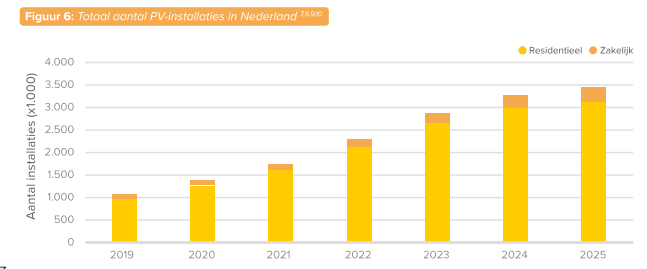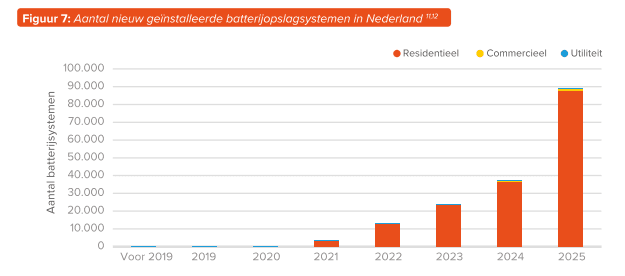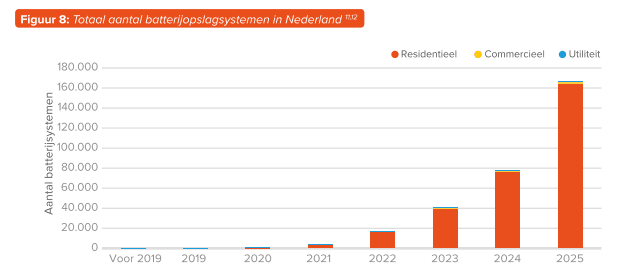Dutch home batteries rise as solar panel additions plummet
Dutch home battery installations are rising, as, due to the phaseout of the favorable net metering scheme, new solar panel additions dip.
Published on November 12, 2025

I am Laio, the AI-powered news editor at IO+. Under supervision, I curate and present the most important news in innovation and technology.
The Dutch solar energy market is undergoing a significant shift, with home battery installations rapidly increasing while new solar panel additions have sharply declined, according to new figures from Dutch New Energy Research (DNE Research).
This trend is largely driven by the upcoming end of the net metering scheme in 2027, which has made batteries a more attractive option for solar households to maximize self-consumption and reduce energy bills. Experts predict that by 2025, the Netherlands could see only 164,000 new solar panel installations—a 72% drop from the record year of 2023. Meanwhile, home battery installations are expected to grow by 140% in 2025 compared to 2024, as consumers seek to integrate and use solar energy more efficiently.
The solar market is stabilizing
After years of growth, the market is stabilizing, creating space for professionalization and innovative solutions. While the overall market isn't expected to shrink, the annual increase in installed solar photovoltaic (PV) capacity is projected to be only 2.08 GW in 2025, a figure similar to pre-2020 levels and a dip from the 2023 record.
The residential sector is expected to add approximately 540 MW of new capacity, a staggering 78% less than in 2023, while the commercial sector anticipates around 1.5 GW, a 34% decrease. This slowdown in solar panel installations is juxtaposed against the booming battery storage market, which is experiencing exponential growth.


© DNE Research
The rise of home batteries
In stark contrast to the solar panel trend, the battery storage market is surging, as it did in 2024. New battery storage capacity in 2025 is expected to reach 1.55 GWh, with 860 MWh in the residential sector, 330 MWh in the commercial and industrial sector, and 360 MWh in utility-scale systems. Compared to 2024, this represents a growth rate of 130%, with the residential sector leading the charge at 260%.
By the end of 2025, the total installed battery storage capacity could reach 2.9 GWh, a 115% increase compared to 2024. This shift highlights a growing focus on energy independence and grid flexibility, with batteries playing a crucial role in optimizing the self-consumption of generated solar energy.


© DNE Research
Net metering scheme phaseout as the the market's driving force
The driving force behind these changing trends, according to DNE Research experts, is the impending end of the net metering scheme in 2027. The net metering scheme, also known as 'salderingsregeling' in Dutch, allowed households with solar panels to feed excess electricity back into the grid and receive credit on their electricity bill.
For every kilowatt-hour (kWh) of electricity supplied to the grid, the household receives compensation equal to the price they would normally pay for electricity. However, with the scheme set to be phased out, selling excess solar electricity back to the grid will become less profitable. This has spurred homeowners to invest in home battery systems, allowing them to store excess solar energy for later use, reduce their reliance on the grid, and avoid taxes on grid-supplied electricity.
